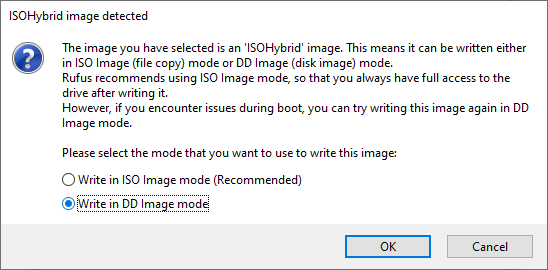


- #Rufus kali linux usb how to
- #Rufus kali linux usb install
- #Rufus kali linux usb iso
Qun 26 20:03:30 kali bluetoothd: Excluding (cli) sap Qun 26 20:03:30 kali bluetoothd: Starting SDP server Qun 26 20:03:30 kali systemd: Started Bluetooth service. Qun 26 20:03:30 kali bluetoothd: Bluetooth daemon 5.47 Qun 26 20:03:29 kali systemd: Starting Bluetooth service. └─2581 /usr/lib/bluetooth/bluetoothd -noplugin=sap Loaded: loaded (/lib/systemd/system/rvice enabled vendor preset: disabled)Īctive: active (running) since Fri 20:03:30 UTC 8s ago
check bluetooth status with the following command. This configures bluetooth to run on boot. ExecStart=/usr/lib/bluetooth/bluetoothd –noplugin=sap. ExecStart=/usr/lib/bluetooth/bluetoothd. blue packages – to get bluetooth up and running on kali linux for your raspberry pi. Though when learned, vim allows for more robust commands to be run such as advanced search and/or replace functions. gedit is a text editor similar to windows notepad that can be used from command line to open files and edit them with ease. iperf3 allows for testing to or from an iperf3 server/client to check available bandwidth. pianobar allows for pandora to be played via command line (requires pandora account). mtr is mytraceroute which is a continuous traceroute with stat tracker, good for network troubleshooting. #Rufus kali linux usb install
Explanations for the packages in that install command are as follows:. sudo apt install mtr traceroute telnet chromium pianobar iperf3 gedit bluetooth bluez blueman vim. Additional programs you may want to install with the following command:. Choosing default settings is fine for the programs unless you would prefer otherwise. On upgrading packages you may receive several prompts. Open a terminal window and run the following commands. If connecting on a wireless network, connect to it via the internet icon on the top right of the screen similar to how you would on a laptop or other mobile device. Login with username: root password: toor. It will now boot into Kali Linux when turned on. This option is good if you don’t feel like installing another OS on the machine or playing around with partition magic third-party programs. Kali is Debian based Linux open source operating system by Offensive Security team of experts. #Rufus kali linux usb how to
After it’s complete, install the microsd card into the powered-off raspberry pi 3 directly, as the primary microsd card. As I promised, short tutorial on how to boot Kali live from USB. #Rufus kali linux usb iso
Open Rufus and choose to create a bootable disk using the iso that was downloaded, choose micro sd card as the device. Download a Kali Linux Arm Image (iso) for Raspberry Pi 3. Format it as fat32 by right clicking on the drive in file explorer, changing file system to fat32 and clicking ‘Format…’ and clicking ‘start’ on the bottom. Connect a 32gb microsd card to a usb adapter so the windows system can read it. I don’t know why it’s configured that way. For example, if you have a 32GB drive, you will only have about 6.7GB total and only a little of that available once Kali Linux is installed. Kali Linux on Arm provided by offensive-security (the makers of kali linux) does not come in an iso so the drive it is installed on will be of fixed size and that drive size cannot easily be changed in windows.






 0 kommentar(er)
0 kommentar(er)
